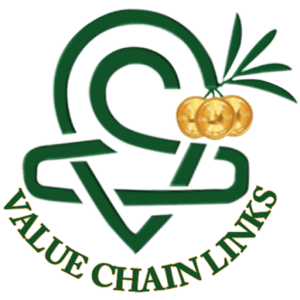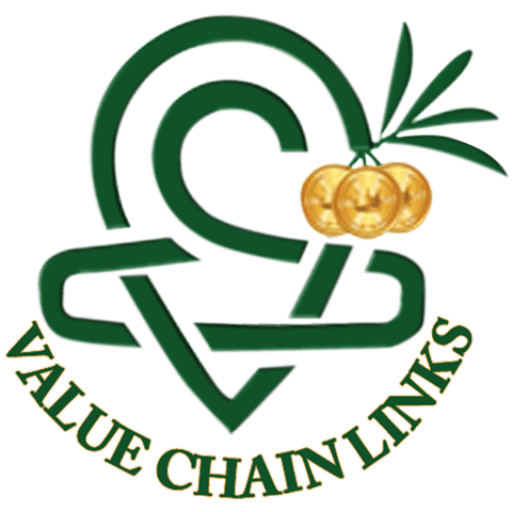WHAT LESSON CAN WE TAKE FROM THE KIBBUTZ MODEL TO IMPROVE SMALLHOLDERS’ LIVELIHOOD?

by dr. Nimrod

| *In my articles, I address general phenomena. Mention of a country/continent is used for illustration purposes only. |
| “There are an estimated 500 million smallholder farms in the world, supporting almost two billion people”, most of which are in Asia and Africa (Wikipedia). THE “SHIVAH”“Shivah” means seven (7) in Hebrew. According to the Jewish tradition, after someone dies, first-degree relatives sit for seven days (a week) and mourning.This week, after my mother’s death, I set down Shivah. Hundreds of people came to share ours and their grief, feelings, and condolences.My mother was among a small group of about 30 young people who established Kibbutz Tzuba in 1948, where I was born 17 years later. We set in the Kibbutz where she lived, worked, and contributed to many people’s wellbeing.Talking with the mourning visitors was an excellent opportunity to hear stories from the past. Those stories give a perspective on the magnitude of achievements and challenges my mother’s generation in the Kibbutz faced, experienced, and overcome in the past 72 years. |
| OLOCAUST SURVIVORSMy mother was a holocaust survivor. So were most of her friends, who have gone through a similar life trajectory, which included; losing their families in the death camps of the Nazis, fleeing to Israel, and fighting Israel’s Independence War. |
 Auschwitz concentration camp is where my mother’s family was murdered. Auschwitz concentration camp is where my mother’s family was murdered. |
| After all this, only 20 years old, my mother and her brothers in arm arrived at that rocky hill and climbed it to establish Kibbutz Tzuba.Imagine the situation and think of those young people; they have no family, no relatives, no money, lost tens of their best friends and brothers in arms during the war, and have no (or limited) agricultural education.As if that was not enough, they got to the top of a hill, where there is no water, no electricity, no trees, no… This mountain was full of nothing. |
 .Kibbutz Tzuba’s day of ascension, 1948 (my mother in a circle). .Kibbutz Tzuba’s day of ascension, 1948 (my mother in a circle). |
| Still, nothing scared them; they were pioneers with an entrepreneurial spirit, they were willing to give what it takes to make their dream and initiative, the Kibbutz, a tremendous success.It may not be the perfect setting for a future leading agro-industry, but they decide to give it a try and make agriculture their source of living.From a historical perspective, I can say that they did an outstanding job. In the first 30 years, they build from nothing a thriving agriculture-oriented community.Then they added and diversified the sources of income by expanding into industrial activities as well.Seventy-two years later, I sit down, this week, in front of my parents’ house in Kibbutz Tzuba and wondered;What was it that enabled those 20 years old, holocaust survivors, the first pioneers, to create, out of days filled with pain, difficulties, and scarcity, such a grand agricultural success, which later turned into wealth and abundance? |
 Part of Kibbutz Tzuba today. Part of Kibbutz Tzuba today. |
| THE POWER OF THE GROUPAfter Israel’s Independence War in 1948, there was a vast effort to settle and inhabit the young state.The government helped and promoted settlements in every way possible, especially in remote areas and along the borders.This effort included three forms of settlement:Kibbutz – a small community with an extremely high level of cooperation, equality, and community organization.Moshav – a relatively larger community with a medium level of cooperation, equality, and community organization.Town – a large community with a low level of cooperation, equality, and community organization. |
 . . |
| Thirty years later, the results of that effort were visible –Most Kibbutzs were prospering from a social and economic perspective. Individuals were prospering, without significant differences amongst them.The Moshavs were also thriving, but slightly less than the Kibbutzim. Some individuals were prospering far more than the others.All the Towns were struggling to survive, facing significant social and economic difficulties. The inequality between individuals is enormous. Today, 72 years after the Independence War, the Kibbutz’s constitute less than 1% of Israel’s population but produce about 42% of its agro-produce, 10% of its industrial products (not including high-tech and diamonds), and 16% of Israel’s industrial exports. Undoubtedly, an unprecedented achievement. |
 .Kibbutz Tzuba’s successful agro-industry. A vineyard, 2020. .Kibbutz Tzuba’s successful agro-industry. A vineyard, 2020. |
| Contrary to the Kibbutz, the sole person, an individual settlement who tried to make a living out of agriculture, has never been successful in Israel. Their contribution to the country’s economy is insignificant. ARCHE TYPEWhen establishing the Kibbutz, my mother was not richer than the poor smallholders of Africa and Asia. Yet, 72 years after establishing the Kibbutz, she died as a successful person, living in a well-established and supporting community. |
 My mother came alone to a rocky hill and left behind a legacy of a large happy family and a flourishing community (Top – with the family, Bottom – a Kibbutz celebration in and outside the dining room). My mother came alone to a rocky hill and left behind a legacy of a large happy family and a flourishing community (Top – with the family, Bottom – a Kibbutz celebration in and outside the dining room). |
| You see, in 1948, the prosperous future was not clear at all, as my mother and her brothers in arms climbed up that hill.If this small group of young people had chosen to face the cruel reality, each man/woman alone, the results would probably have been as typical smallholders get.Instead, they made a strategic decision to organize, cooperate, and unite forces and means of production. Judging by the results, they did the right thing.History shows that the best way to advance agriculture, especially under harsh, challenging, and brutal conditions, is done best and fastest when the level of cooperation, equality, community organization, commitment, and management is high. That could partially explain the success of the Kibbutz model. |
 My mother (in a circle), at the age of 16, with a group of holocaust survivors, all are orphans. They were her family (Bet HaShita, 1944). My mother (in a circle), at the age of 16, with a group of holocaust survivors, all are orphans. They were her family (Bet HaShita, 1944). |
| However, too often, smallholders are part of a community and environment where cooperation is relatively low.Leaving each individual to face and deal with its problems all by himself is a recipe for failure, as it was in Israel with individuals and communities sharing low-level of interdependence.The reality and history of undeveloped countries, as Israel was 72 years ago, proved that individuals working alone, without strong ties within the community, are having less successful results.In contrast, the Israeli lesson teaches us that a good predictor of future social and economic success is the level of the following indicators; community commitment and cooperation, equality, and well organized and managed organization.Should we dismiss this experience and the repeatedly proven success data (from hundreds of Kibbutz’s)?Should we not use this gathered collective experience and information in our efforts to improve the livelihood of African and Asian smallholders?Is it impossible to take all, or some, of the Kibbutz success characteristics and reasons into the agriculture communities and social environment in Africa and Asia? CREATING THE FUTURE, WE DREAMWhen I defined and designed the Green Valley model, it was clear that the keyword to achieving success will be “cooperation” among farmers.The farmers will benefit more in a shorter time and a sustainable manner when we manage to elevate collaboration, cooperation, and organization between the farmers and the various stakeholders and parties involved.These days, when we perform the evaluation screening for the first participants in the Green Valley program, we examine the candidates’ willingness to share the knowledge they will gain with other farmers.We view each of the farms and farmers taking part in Green Valley as a potential center of excellence and knowledge, and we wish it to be shared with others.When we take this attitude approach, we see the great benefits for farmers being part of associations and organizations, cooperating, and achieving agro-industry mutual goals.It is my view that Green Valley‘s way to cooperate and work with smallholders will be best and most efficient through such associations, and even better is if we manage to strengthen and support them.Hence, Green Valley is looking to cooperate and support leading farmers who believe that it is in their interest to help other farmers improve their results. By sharing their experience and knowledge with other farmers, they will contribute directly and indirectly to their future economic success.Thanks to those young people who escaped the Nazis, who established many Kibbutzs, Israel built an advanced and successful agro-industry.It will be great to know that the efforts and sacrifices of those holocaust survivors, like my mother, may also help today’s farmers in emerging economies by better designing the building blocks required for having a successful agro-industry structure.Green Valley is the historical manifest of concepts, ideas, success, and failures that have reshaped the agro-industry, and many nations’ economy, in recent decades.Hence, it is my privilege to introduce the Green Valley concept to farmers in emerging economies, starting with the mango growers. |
| Share with someone who need to see it. |

